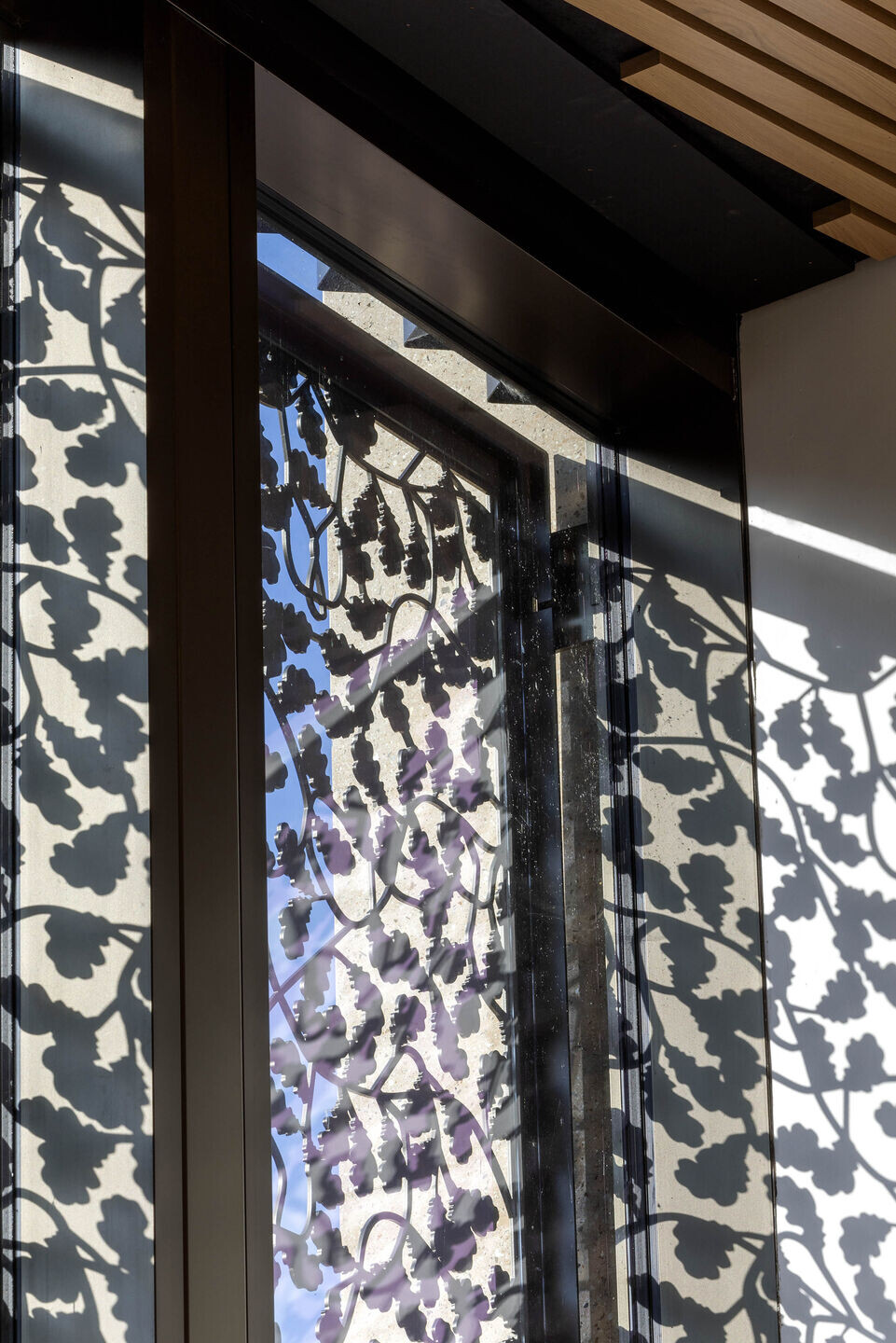St Hilda’s was founded in 1893 and the College site has evolved into an informal sequence of buildings set within beautiful gardens on the banks of the River Cherwell. Gort Scott – appointed following an international design competition in 2016 – introduced spatial coherence and a greater sense of place elevating the landscaped setting and the verdant edge of the River Cherwell.
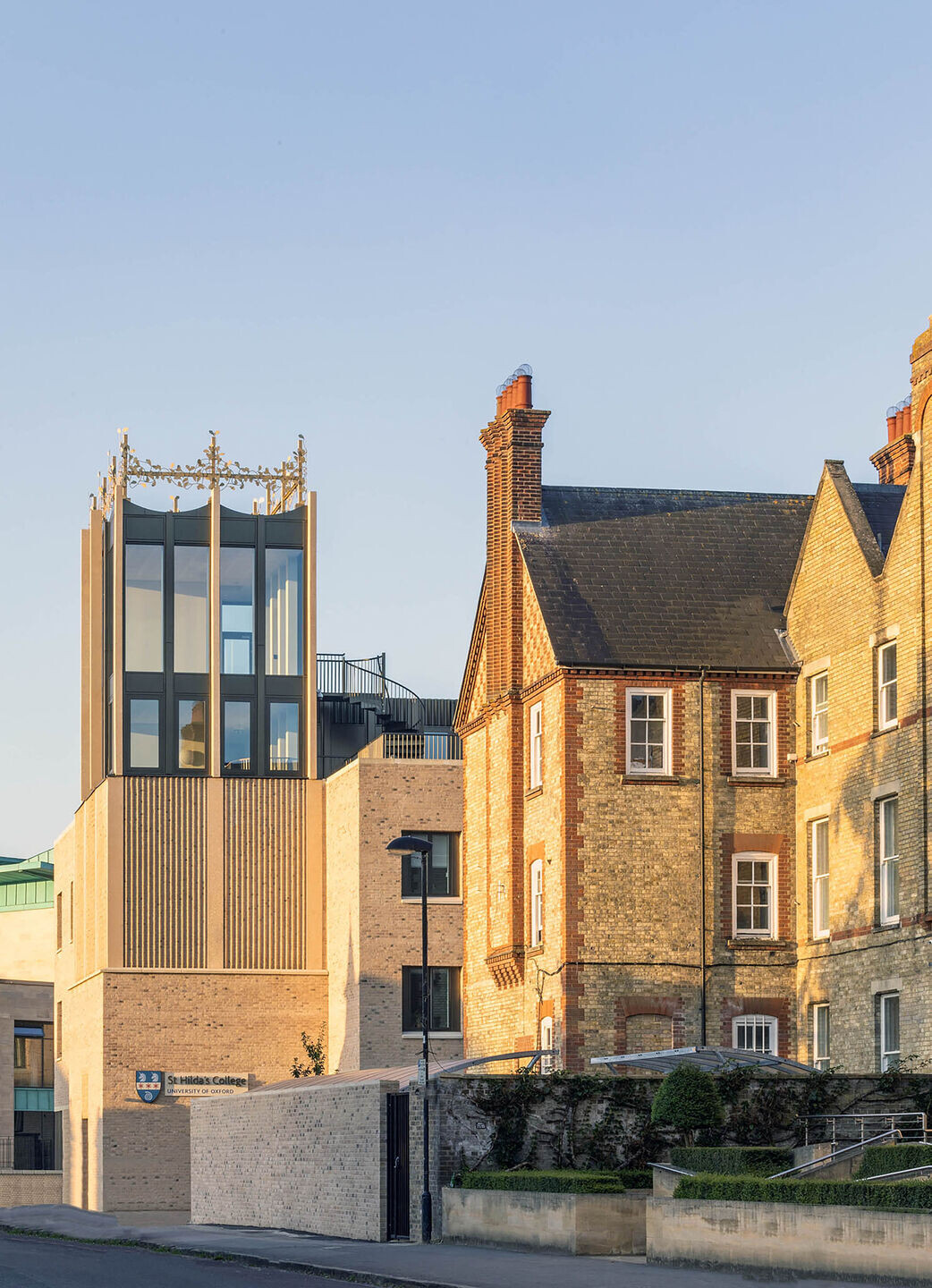
The previous entrance sequence was underwhelming and confusing, with a distinct ‘back of house’ feel and a large swathe of tarmac that detracted from the potential of the College’s picturesque setting. A small residential building dissected the College grounds at this pivotal location within the estate.
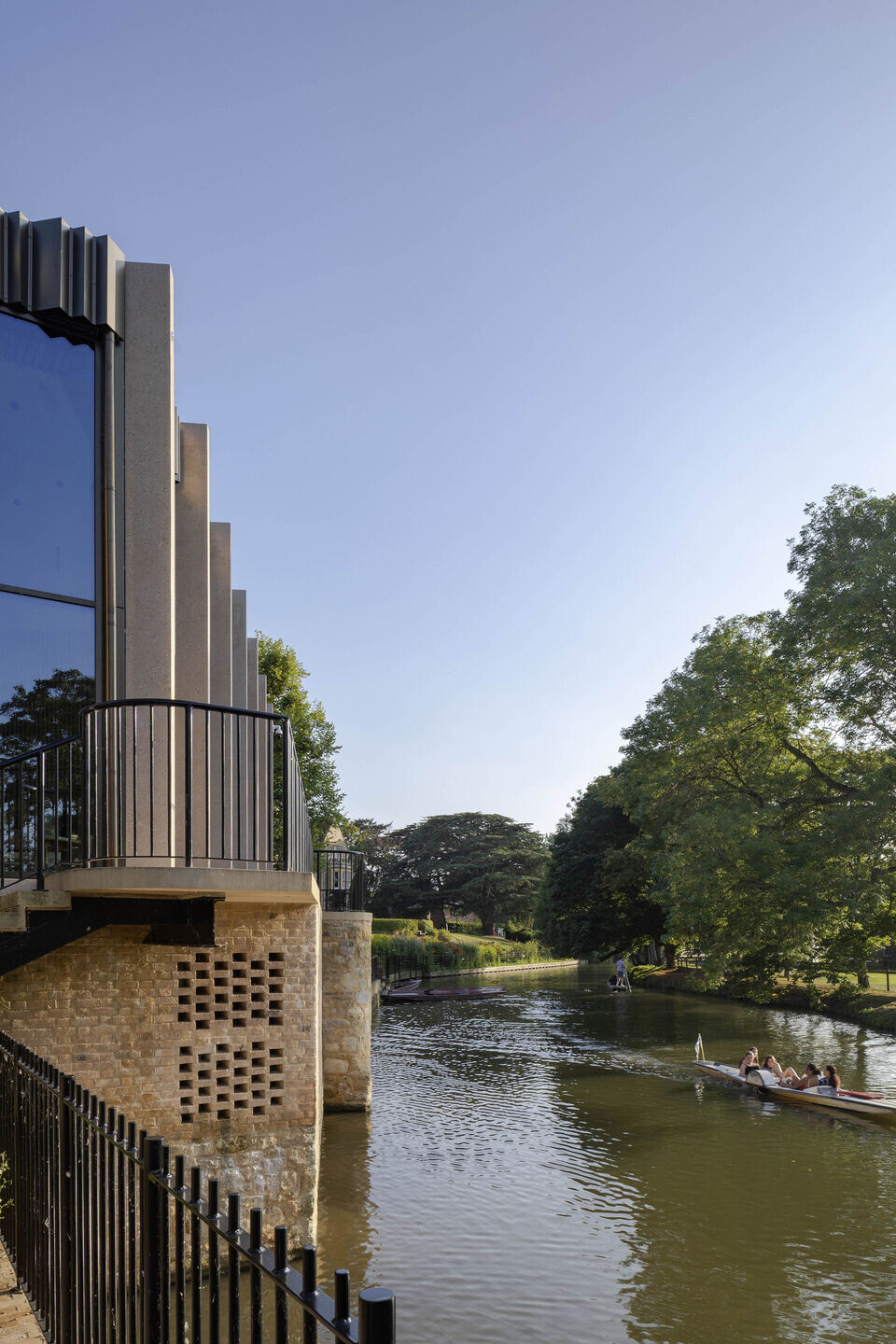
After extensive testing, Gort Scott found that removing this structure would be fundamental to delivering the ambitions of the College in creating a connected and more inclusive design that would enhance the experience of St Hilda’s as a place to study, live and work. In its place is located a pavilion, conceived as jewel-like within the landscape in this position of prominence and outlook. This is a lighter and more transparent structure to be seen in the round as a counterpoint to the solidity and robustness of the Anniversary Building. The Pavilion provides a more democratic and accessible space for all members and visitors to the College where before the fine views from the residential building could only be enjoyed by a few.
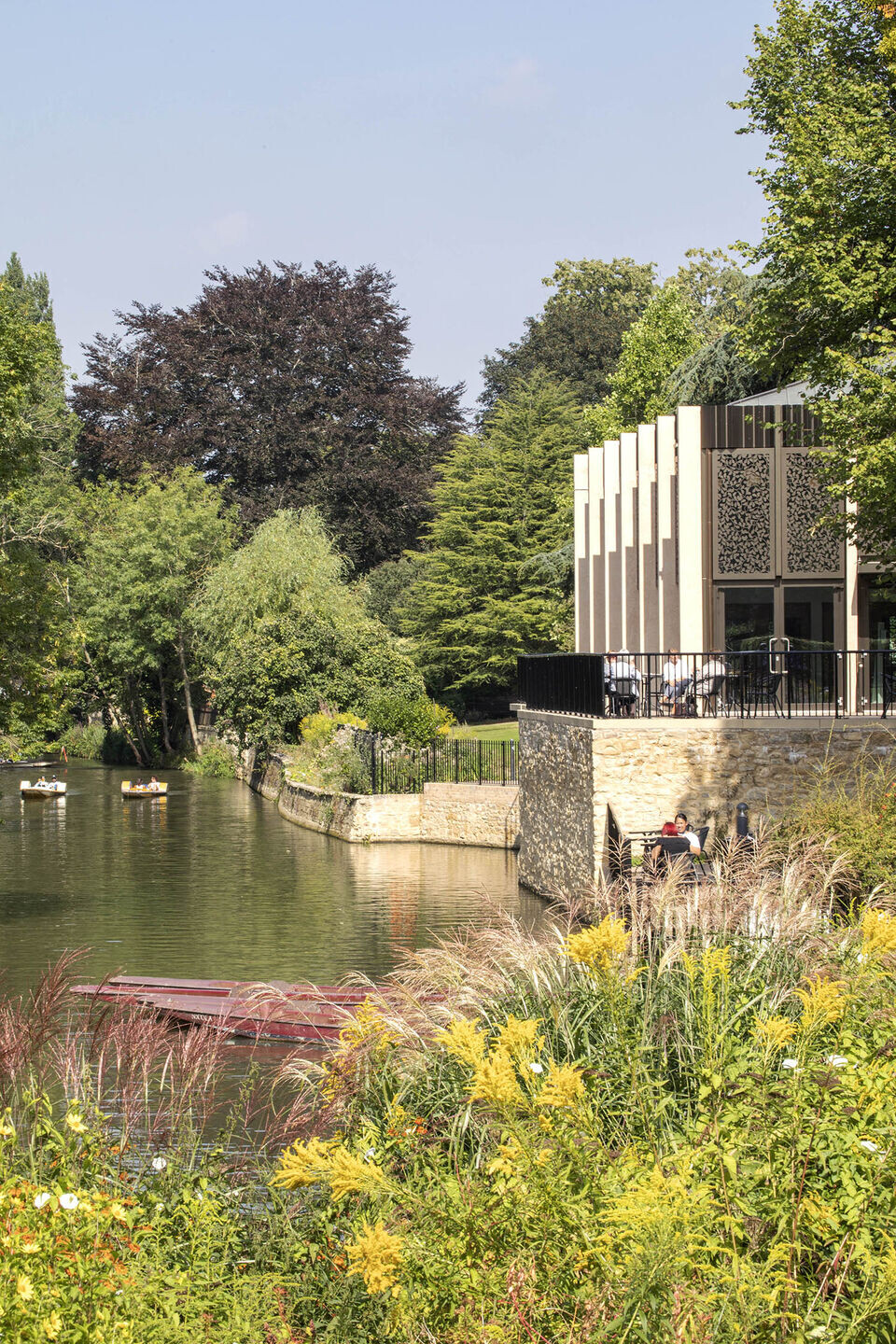
Establishing a hinge point in the College estate, the Anniversary Building reinforces the relationship between existing structures located either side, to become a ribbon of buildings. As a group, they form a backdrop to the revitalised landscape and towards the ‘borrowed landscape’ across the river of Christ Church Meadows and beyond.
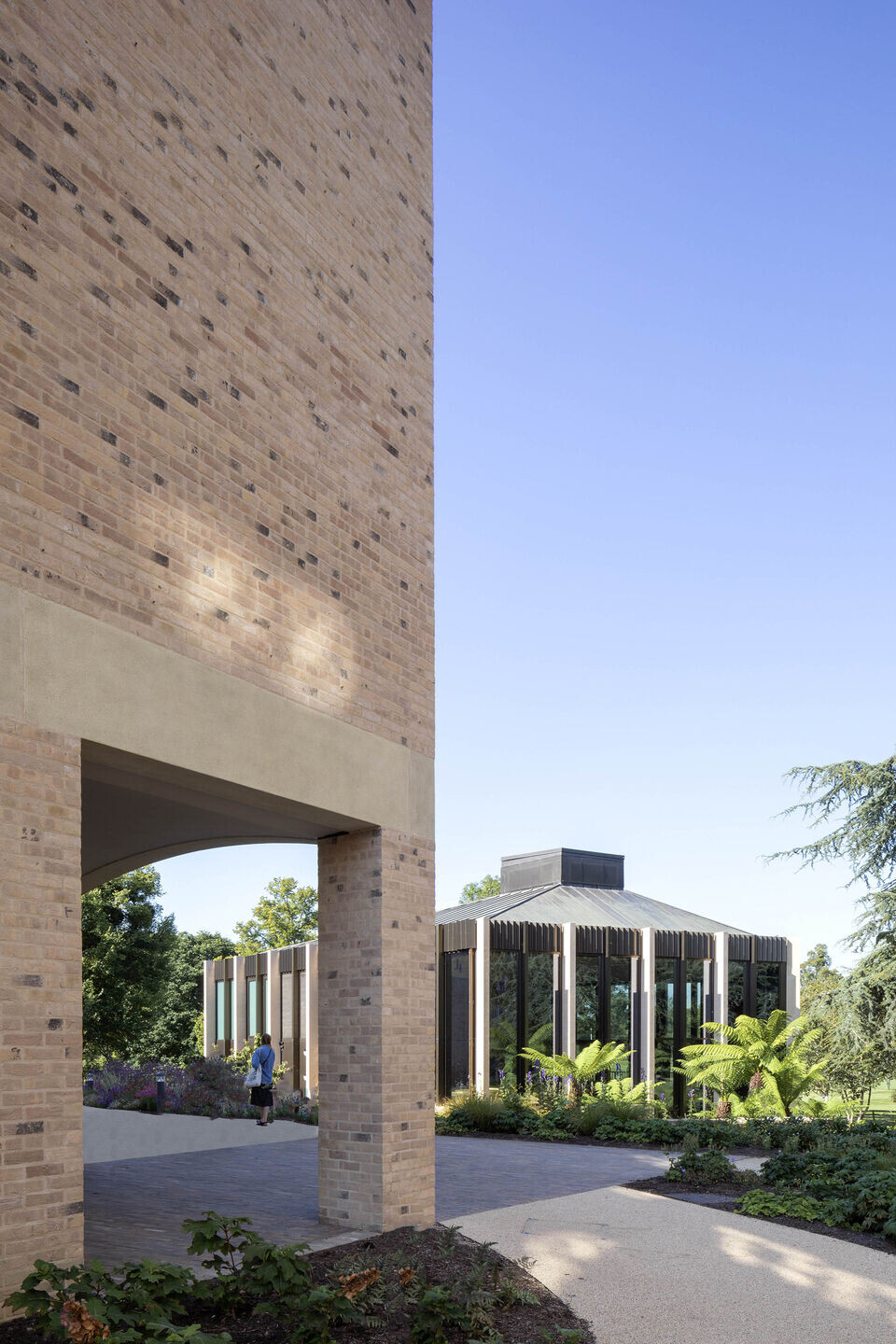
The form and fabric of the building have been designed to inherently help to control internal climate, to provide a comfortable place in which to live and work, by reducing the demand for heating or cooling benefitting from concrete high thermal mass and natural ventilation. The high hot water usage for student accommodation means that hot water generation represents a significant demand for energy throughout the year. This is optimal for the use of Combined Heat and Power to provide heating for hot water as well as a source of electricity that reduces carbon emissions.
Alongside the newly legible main entrance and Porter’s Lodge, the Anniversary Building accommodates administrative and academic offices, a Middle Common Room and about 60 ensuite study bedrooms. An expansive planted roof terrace gives further amenity space with remarkable views across the city skyline.
The riverside Pavilion provides St Hilda’s with a much-needed large multifunctional space, primarily for teaching and events. Accessibility has been paramount in the design of the buildings and landscape, to enable step-free access throughout.
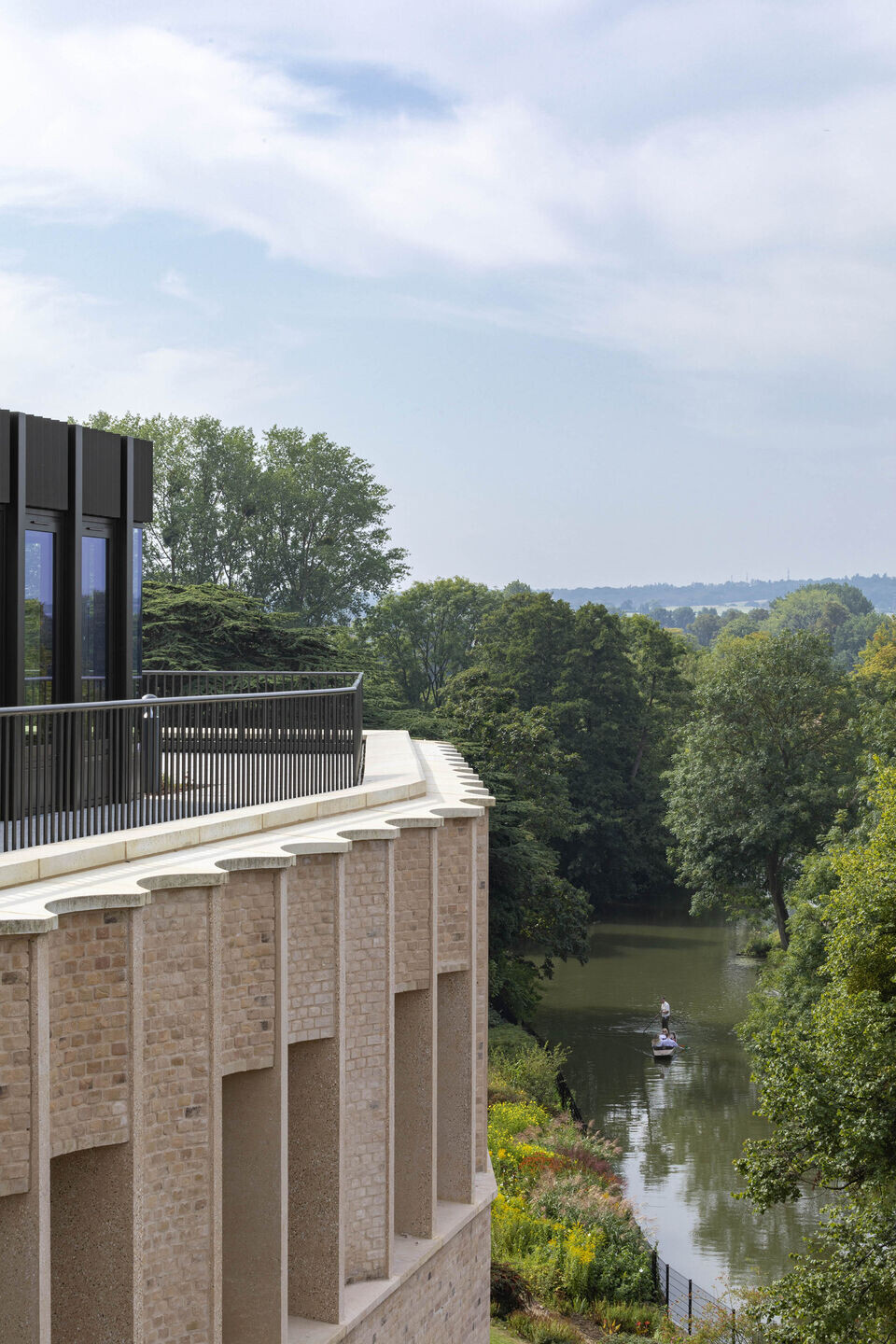
In developing the look and feel, Gort Scott have echoed and reinterpreted characteristics and idiosyncrasies of other buildings in the estate. Associations of shape, hue, tone, texture and detail have permeated the new buildings’ appearances. While the predominant material is brick, linking these new additions to their surroundings, decorative detailing such as a scalloped frill to the top storey of the Anniversary Building gives the building its own identity, while precast concrete components and bronze-coloured metalwork provide further contrast.
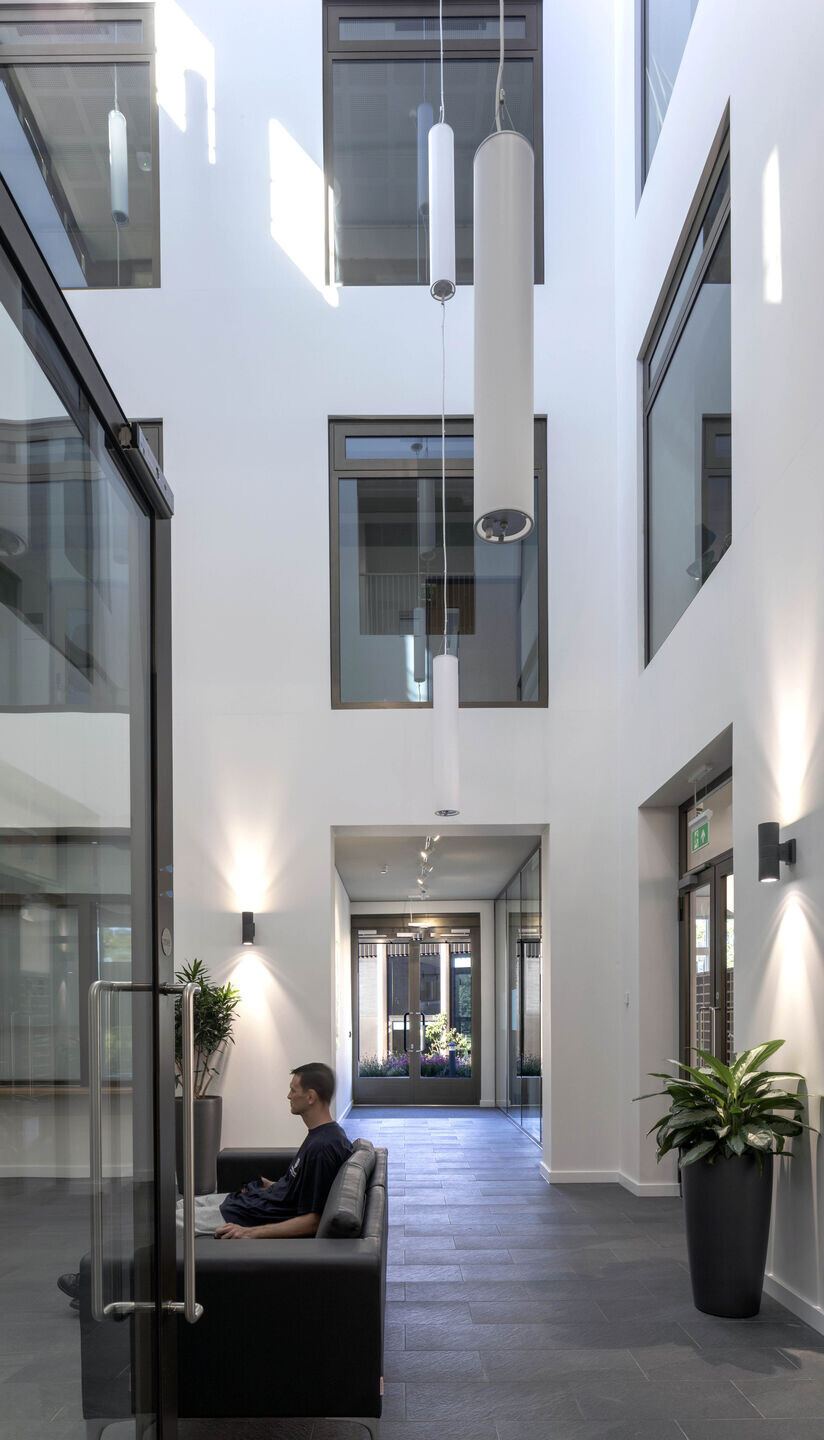
In signalling the new entrance to the College on Cowley Place, the Anniversary Building incorporates a tower. Functionally, this gives access to the amenity roof terrace and two special multi-functional rooms. The design of this structure has been carefully gauged in its height and proportions, so that it is slender yet creates an orienting marker and totem for the College within Oxford, establishing St Hilda’s College within the wider network of Colleges and the University itself. The appearance of the Pavilion and the Tower resonate as distinctive features of the development, and the transparency of the latter allows it to become a glowing lantern at night. Decorative metalwork creates a filigree crown to the tower, with details that have botanical references to both the College and the Botanic Garden across the river – this creates an intriguing addition to the city skyline.
